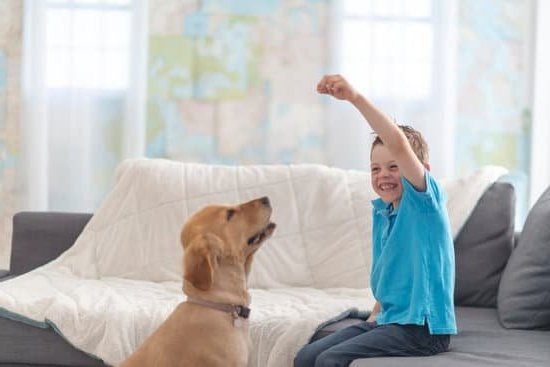Potty training a dachshund, also known as a wiener dog, can be a challenging but ultimately rewarding experience for any dog owner. In this article, we will explore the ins and outs of potty training these adorable yet sometimes stubborn little dogs. As the proud owner of a dachshund, it’s important to understand the unique challenges that come with potty training this particular breed.
Starting potty training early is crucial for wiener dogs, as they can be notoriously difficult to train if bad habits are allowed to form. Their small size and stubborn nature can make the process more challenging, but with the right approach and consistency, it is definitely achievable.
In order to successfully potty train a dachshund, it’s essential to understand their breed characteristics and how these may impact their ability to learn proper potty behavior. Additionally, establishing a routine, using positive reinforcement, crate training, supervision and monitoring, and dealing with setbacks are all key elements in effectively potty training a wiener dog.
Understanding the Breed
Dachshunds, or wiener dogs, are a unique breed known for their stubborn nature and small size. When it comes to potty training these adorable pups, it’s important to understand how their characteristics may impact the training process. Their stubbornness can sometimes make them resistant to training, but with patience and consistency, it is possible to successfully potty train a dachshund.
The small size of dachshunds also plays a role in potty training. Their tiny bladders require them to go outside more frequently than larger breeds. Understanding this need for frequent potty breaks will help in establishing a successful routine for your wiener dog. Additionally, their small size means they may be more prone to accidents indoors if not properly trained.
In order to effectively potty train a dachshund, it’s essential to recognize and take into account these specific traits of the breed. By understanding the unique challenges that come with potty training a wiener dog, you can tailor your training approach to better suit their needs and ultimately achieve success in the training process.
Setting Up a Routine
One of the key elements in successfully potty training a wiener dog is establishing a consistent routine. Dachshunds, like many other breeds, thrive on routine and structure, so it’s important to create a predictable schedule for feeding and bathroom breaks. By doing so, you can help your dog understand when it’s time to go potty and reduce the likelihood of accidents in the house.
Importance of Consistency
Consistency is crucial when setting up a potty training routine for your wiener dog. Dogs are creatures of habit and thrive on consistency. By taking them out at the same times each day and providing meals on a regular schedule, you can help them establish good bathroom habits. It’s also important to use the same designated potty area each time to reinforce the desired behavior.
Establishing a Regular Feeding Schedule
In addition to consistent potty breaks, setting up a regular feeding schedule can also aid in potty training. By feeding your wiener dog at specific times each day, you can predict when they will need to go outside. Avoid free-feeding or leaving food out all day, as this can make it harder to anticipate when your dog needs to eliminate.
Creating a Designated Potty Area
Designating a specific area for your wiener dog to do their business can also help with potty training. Choose an outdoor spot that is easily accessible from your home and consistently take your dog there each time they need to go. Using the same area every time will encourage good habits and prevent confusion for your pet.
By establishing a solid routine for feeding and bathroom breaks, you can set your wiener dog up for success in their potty training journey. Consistency is key in helping them understand where and when they should go, ultimately leading to fewer accidents in the house.
Positive Reinforcement
When it comes to potty training a wiener dog, positive reinforcement is an essential aspect of the training process. Using treats and praise to motivate good potty behavior can be highly effective in encouraging your dachshund to go in the designated potty area. By rewarding your dog every time they successfully go potty in the right spot, you are reinforcing this desired behavior and making them more likely to repeat it.
One effective way to utilize positive reinforcement is by creating a rewards system for your wiener dog. This could include giving them a small treat immediately after they go potty in the designated area or showering them with verbal praise and affection. Consistency is key when using positive reinforcement, so be sure to reward your dog every single time they exhibit good potty behavior.
It’s important to avoid punishment for accidents during the potty training process. Instead of scolding or punishing your dachshund for going in the wrong place, focus on redirecting their behavior to the designated potty area and reinforcing the desired behavior with positive rewards. By maintaining a consistent and patient approach, you can effectively use positive reinforcement to establish good potty habits in your wiener dog.
- Use treats and praise as rewards
- Establish a rewards system for good potty behavior
- Avoid punishment for accidents
Crate Training
Once your wiener dog is comfortable with the crate, it’s essential to establish a routine for using it as part of their potty training regimen. Utilize the crate during times when supervision is not possible, such as at night or when you’re away from home.
Since dogs instinctively avoid soiling their living spaces, the limited movement in a properly-sized crate can help them “hold it” until they are taken outside to potty. Additionally, avoid leaving your dachshund in the crate for extended periods without a potty break, as this could lead to accidents and setbacks in their training progress.
Despite its advantages, it’s important to use caution with crate training and avoid common mistakes that could hinder your wiener dog’s potty training progress. Some of these mistakes include leaving the dog in the crate for too long, using an oversized crate that allows them to soil one end and sleep on the other, and neglecting to gradually introduce the concept of spending time in the crate.
With proper use and positive reinforcement, however, crate training can be an effective tool in helping your wiener dog learn good potty habits.
Supervision and Monitoring
Keeping a Close Eye on the Dog’s Behavior
When potty training a wiener dog, it is crucial to closely monitor their behavior throughout the day. This means keeping a watchful eye on them to look for any signs that they may need to go potty. These signs can include whining, circling, sniffing the ground, or suddenly disappearing from sight. By being attentive and proactive in observing their behavior, you can quickly guide them to their designated potty area and reinforce positive habits.
Understanding the Signs of Needing to Go Potty
Dachshunds, like many other breeds, have specific behaviors that indicate they need to relieve themselves. Understanding these signs is essential for successful potty training. It’s important to pay attention to your wiener dog’s body language and cues that indicate when they may need to go outside. By recognizing these signs early on and taking prompt action, you can prevent accidents indoors and encourage good potty habits.
How to Minimize Accidents Through Attentive Monitoring
By closely supervising and monitoring your wiener dog during the potty training process, you can minimize accidents and setbacks. Consistent observation allows you to anticipate when they need to go potty and proactively guide them towards their designated area.
Additionally, by being vigilant in watching their behavior indoors, whether through direct supervision or using tools like security cameras or baby gates if necessary, you can intervene before accidents occur and reinforce positive habits effectively. Remember that patience is key during this process as it may take time for your dachshund to fully understand what is expected of them in terms of going potty in the appropriate area.
Dealing With Setbacks
One common challenge in potty training dachshunds is their independence and strong-willed nature. They may test boundaries and push back against the established routine, leading to accidents or reluctance to follow potty training rules. It’s important for dog owners to remain consistent and firm in their approach, even when faced with setbacks. By staying patient and calm, handlers can work through these challenges without causing stress for themselves or the dog.
When setbacks occur, it’s essential to avoid reacting negatively or using punishment as a means of correction. Instead, focus on reinforcing positive behaviors through consistent positive reinforcement. This can include offering treats and praise when the dog successfully goes potty outside, while also redirecting them from negative behaviors indoors without scolding or punishment. By revisiting and adjusting the training approach as needed, handlers can help their Wiener Dogs overcome setbacks and continue making progress towards successful potty training.
Celebrating Success
In conclusion, potty training a wiener dog can be challenging but with the right approach and understanding of the breed, it is definitely achievable. Starting early and being consistent with a routine, positive reinforcement, crate training, and close supervision are key elements to successfully potty train a dachshund.
It’s important to remember that setbacks are normal and should not discourage you from your efforts. Celebrating success by recognizing and reinforcing positive potty habits is essential in transitioning from indoor to outdoor potty training and maintaining good habits in the long run.
As dachshunds are known for their stubborn nature, celebrating success in potty training involves patience and understanding. By using treats and praise as positive reinforcement, owners can motivate their wiener dogs to exhibit good potty behavior. It’s crucial to avoid punishment for accidents and instead focus on consistency and patience in the training process.
Transitioning from indoor to outdoor potty training is a significant milestone in celebrating success. This requires careful monitoring of the dog’s behavior and effectively recognizing the signs of needing to go potty. As owners continue to reinforce positive habits, they can ensure that their wiener dogs maintain good potty behavior in the long run. With dedication, patience, and perseverance, celebrating success in potty training a wiener dog is ultimately rewarding for both the owner and the pet.
Frequently Asked Questions
Are Wiener Dogs Hard to Potty Train?
Potty training a Wiener Dog can be a bit challenging due to their stubborn nature and independent personality. Consistency, patience, and positive reinforcement are key factors in successfully potty training a Dachshund. It’s important to establish a routine and take them outside frequently, especially after meals and naps.
How Do I Stop My Dachshund From Peeing in the House?
To prevent your Dachshund from peeing in the house, it’s essential to address any underlying medical issues first by consulting with a veterinarian. Once medical issues are ruled out, focus on consistent potty training, crate training, supervising them at all times indoors, and providing ample opportunities for outdoor bathroom breaks.
Additionally, cleaning any indoor accidents thoroughly with an enzymatic cleaner can help deter repeat offenses.
Are Wiener Dogs Easy to Train?
Wiener Dogs are intelligent and eager to please, making them relatively easy to train with the right approach. Positive reinforcement methods such as treats, praise, and consistency can go a long way in teaching commands and house manners to Dachshunds.
However, they may also have an independent streak that requires patience and creativity when it comes to training sessions. A calm and firm leadership style is essential for effectively training these lovable but sometimes stubborn dogs.

Welcome to the blog! I am a professional dog trainer and have been working with dogs for many years. In this blog, I will be discussing various topics related to dog training, including tips, tricks, and advice. I hope you find this information helpful and informative. Thanks for reading!





